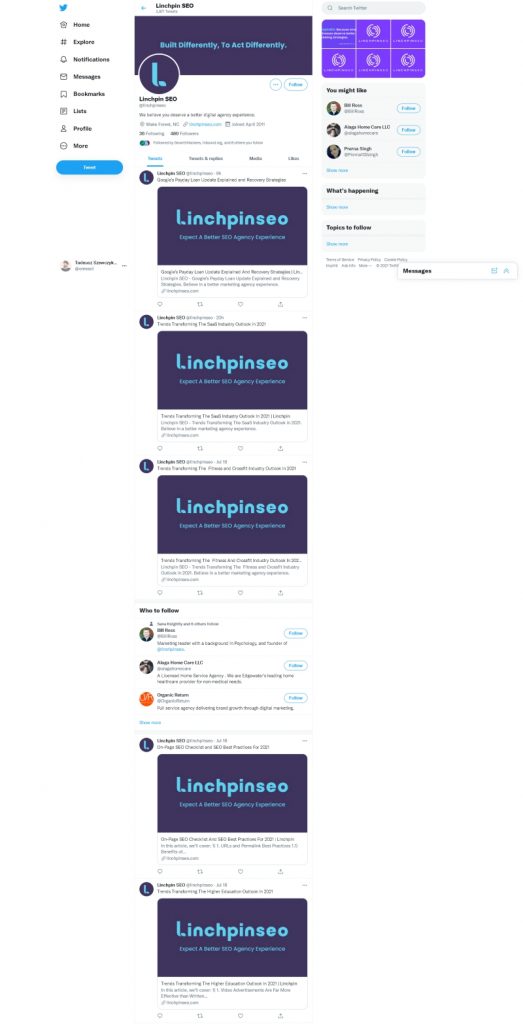What is Content Curation? Examples and How to

Along with the content marketing wave there comes another term – content curation. What is it?
- What does it really mean?
- Do you have examples?
- How to practice it properly?
Read on to find out what content curation really is and how it works on the Web.
Curation is Everywhere!
Curation is seemingly everywhere. That’s great!
Everybody either does it or has to do it.
It’s true, curation makes sense. Yet
most people don’t even know what curation means let alone practice it strategically.
Content curation is not difficult.
Additionally content curation can be a sustainable and regular part of your overall content strategy on your blog and beyond.
Let’s start at the beginning though!
What is Content Curation? Does it Mean Link Sharing?
Content curation is not just a hype.
The term content curation itself is pretty new but the practice of curating has been established for ages.
Someone working in a museum is often referred to as a curator.
The content curators usually do not create the content themselves!
They look at content from other people and select the best, most intriguing or worthwhile pieces.
I am a prolific content curator on Pinterest, one of the best content curation tools.
I collect and bookmark images there. I do not create the images myself.
I share photos from photographers or artworks from artists.
Some people simply refer to sharing on social media as curation.
Sharing links with your fans or followers is enough to become a content curator in a sense.
Is this kind of “incessant link sharing” curation actually useful though? Not really. In some cases yes in most others not.
We live in an attention economy, time is money but time is scarce as hell.
Nobody has the time to read though all the new
- articles
- postings
- white papers
- ebooks.
Nobody has the time to
- attend all the webinars
- view all the videos
- test all the tools
- try all the templates.
Thus getting all of them served by the hundreds isn’t helpful. It’s overwhelming.
That’s why sifting through all the news to find the gems is a task people are glad to delegate.
Without curation we would drown in in content of questionable quality.
We wouldn’t find the signal among the noise.
The Logic Behind Content Curation
What is the purpose of proper content curation then?
It’s about locating the rare high quality signal among the ocean of noise.
Content curation is about reducing the stress of the ever increasing onslaught of often useless and redundant information.
It doesn’t make sense to share content all the time like many automated marketing accounts on Twitter do. Instead you need to act mindfully.
- Choose very carefully.
- Select only a few items.
- Be wary of repetition.
Your task is not to show off how much content you have in your queue but how much you limited your list to only spread the word about the most valuable pieces.
To this day many people and even companies get it all wrong.
Their social media streams are a never ending list of links.

They share every single post of theirs for self-promotion instead of just the best ones.
Thus you ideally follow independent content curators who do not have a vested interest in sharing.
Otherwise they will push all the links from a particular source but just the most relevant ones to a given audience.
In a way the perfect content curator sits atop a mountain peak and has an overview of all the content around them.
They can point everybody else to the best possible paths so that not everybody has to climb on top as well.
Examples of Proper Curation
Daily or weekly curated digests are two common ways of actually useful content curation.
A carefully selected “site of the day” is another example:

Some kinds of curated content are not as popular though as they would deserve it.
How do I know? When you get linked in such a high profile list you only get a few click-throughs.
Why? The reader can gain a quick overview but s/he still gets a bit overwhelmed with the sheer information overload.
You will rarely be able to read though all or most of the posts in a list.
Another common curated content type is the top list or best of list.
“Top 10” headlines are so common these days that many people do not even click them anymore.
The more items such a list has the tougher it is to come to terms with it.
The time you save gaining the overview is lost when trying to click through and find out more about each item.
How to Curate Content the Right Way
How can you make curated content useful in such a manner that people really save time?
How to curate prudently so that followers do not get flooded with even more stuff to read?
A list that summarizes the most important information and only links out to the sources for additional information is the best type of curation.
Also you have to be a bit creative to rise above average and get noticed by your target audience.
Ideally you already craft a headline that shows how you deliver the additional value. Such content curation forms are:
- A combination of a monthly/weekly digest and a topical best of. For people who aren’t researching a topic every day like I do with search the time saving is enormous. One of my favorite web design publications – Speckyboy – excels at this.
- The weekly topical summary of articles offering unique insights and high value. A list of three items each week out of the hundreds of new posts is sufficient.
Again we’re saving lots of time and only get what matters. Noise reduction – just signal. - The “Sites of the Week” digest is another excellent example of time saving curation. For people who love web design it’s the perfect inspirational source.
I can’t spend much time on researching new sites to get inspiration so I love such a short list of a few sites a week. Of course it also works as a daily:

Curation is Not Just Sharing. It’s Selecting
As you see content curation is more than mindlessly sharing links on Facebook and Twitter all the time.
Nobody can read them all so why drop links all the time? Less is more here.
When timeliness, quality and overview converge curated content is best and most useful.
Why should you curate content in the first place you may also ask: you will get expert status by selecting the best resources.
You don’t have to write each outstanding piece yourself.
Showing that you know which one rocks may already suffice to get respect and recognition from industry peers.
Updated: December 6th, 2017. Added example screenshot and link to excellent content curation examples. Updated and republished: December 6th, 2017. Clarified. Removed outdated examples, added new ones. Changed image to one that is “free to use”. Added “logic” paragraph.

Tad – I couldn’t agree more… in fact, the perspective you have just inspired has caused me to re-think the format of my latest experiment into content creation (NicksLinks.net) I think adding summaries, including ‘cliff notes’ style blurbs will seriously up the value to my subscribers. Cheers!
Mr. Szewczyk,
I do believe you’ve summarized my (and likely many other’s’iz’iz’) attention overload frustrations & challenges quite nicely.
When I started my site, I wasn’t all that concerned about getting traffic, because as much as anything else, it was a way to organize my own reading. The list isn’t a ‘read it later’ list; it’s a ‘read it again & never lose it’ list.
It’s exactly as you’ve concluded; the stuff on my list is the stuff that actually touches me.
Traditional thinking might suggest that the more posts I put up, the more useful it would be, but in fact, it’s quite the opposite (as you’ve suggested).
Cheers my friend,
scott skinner
Scott: Yeah, picking the most important articles is much harder than just collecting all interesting ones.
Nick: Yeah, indeed usability guru Jakob Nielsen has been advising for years to start each post with a summary.
[…] Content Curation Above Average is More Than Mindlessly Sharing Links, seo2.0.onreact.com […]
Touche’, nice to have my idea of content curation blown to smithereens… Great insight and the final paragraph, dropped like a line from the heavens.
I like the idea of curation or being a content librarian.
Good call on giving Wayne Barker a shout. I use Barker’s tweet streams at times to see what I’ve missed.
it’s a good time for curation – there is a need in the market – there is a huge amount of information coming forth each day. Industry roundups do exist, but a personality or brand has the opportunity to curate in a unique way and make a good impression doing it.
Hey Tad,
Thanks for the mention, always appreciated – and you may have encouraged me to pick up some of the curation that I used to do that has dwindled off a little bit – who invented kids? I agree with Mr Pensabene as well, there is a need for strong curation – the thing is most people produce faceless lists with little to no commentary…
[…] Click here to view original web page at seo2.0.onreact.com Categories : Content Curation […]
I like weekly curated newsletters. My favorite is http://www.founderweekly.com/
My own curation habits are driven mostly by lack of time and laziness. The upside is that I only post particularly good stuff to various social media. Been playing around with scoop.it for a while too. Scoop.it is pretty cool, but since I don’t add my own commentary very often it sort of becomes a fancy looking social bookmark collection.
[…] On the Web curation often ends as large lists compiled by someone who wanted to collect as many resources as possible. Many Internet users are overwhelmed by such resources lists. There are other ways of pre-selecting content for a better overview. […]
This is interesting. Starting out as a blogger i felt as though linking and posting massive amounts of content is the only way to reach people and gain more traffic. You seem to be promoting the idea of having less content but content that is more memorable and lasting.
Hey Alphonse!
Take note that in this case I talk about sharing on social media.
You can “have” a lot of content but you can’t inundate people with it all the time.
Less is more. Shouting all the time makes people ignore you.
Sincerely, tad